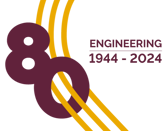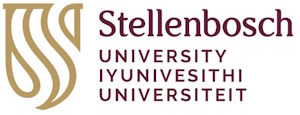
Two members of staff in the Department of Electrical and Electronic Engineering, tasked with designing the reflector antenna shapes for the National Radio Astronomy Observatory of the USA’s upcoming next-generation Very Large Array (ngVLA) radio telescope, received the Institute of Electrical and Electronics Engineers (IEEE) Harold A. Wheeler Applications Prize Paper Award.
Prof Dirk de Villiers, a Professor in the Department of Electrical and Electronic Engineering at Stellenbosch University (SU), was the co-author of the research titled, “An Optimal 18 m Shaped Offset Gregorian Reflector for the ngVLA Radio Telescope” together with Prof Robert Lehmensiek, who is an extraordinary Professor in the same department. The award is presented to the authors of the best applications paper published in the IEEE Transactions on Antennas and Propagation during the previous year.
“The IEEE Transactions on Antennas and Propagation is the top academic engineering journal in the field of electromagnetics and antenna design, receiving thousands of submissions annually from leading researchers across the world,” said Prof Lehmensiek, who will soon join NRAO’s Central Development Laboratory (CDL) in Charlottesville, VA, USA, as a research engineer. “This award recognises our work as being at the forefront of global antenna design.”
Prof de Villiers added: “To be selected for the Harold A. Wheeler prize among so many high-quality papers is a great honour as this specifically highlights excellence in practical antenna design. Hopefully, this recognition by the broader antenna research and engineering community serves as further validation that the ngVLA telescope will have a world-leading reflector system capable of doing all it was envisaged to do by the system designers.”
The award-winning research presented the optics design, and estimated the receiving sensitivity, of the 18-m shaped offset Gregorian reflector system proposed for use in the 244 antennas that will make up the main and long baseline arrays in the upcoming ngVLA. “In this research, we used detailed electromagnetic analyses to fully explore the performance parameters of the proposed antenna system for different reflector shapes,” said Prof Lehmensiek, who led the research while an antenna engineer at EMSS Antennas in Stellenbosch, a contractor to NRAO for the ngVLA. “Ultimately, that allowed us to suggest a best-performing antenna reflector system for the ngVLA radio telescope.”
For the future ngVLA, the best-performing system will mean better focusing, more sensitivity, and better and faster science. “Better focusing means a more sensitive antenna. Improving the sensitivity of one reflector by even one percent equates roughly to having the collecting area of two extra dishes available in a 200-dish system,” said Prof de Villiers.
“More collecting area means we capture more of the faint radiation from the Universe in our telescope, and this directly translates to being able to make images, and do other science, faster. Like having a camera with a larger aperture allows you to take photos with higher shutter speed in low light, having a more sensitive radio telescope allows us to detect fainter signals while observing for a shorter time.”
The National Radio Astronomy Observatory (NRAO) is a facility of the National Science Foundation, operated under a cooperative agreement by Associated Universities, Inc.
Scientific breakthrough will allow astronomers to see the light from the first stars
In a separate project, Prof de Villiers was also part of a team of researchers that developed a method that will allow them to ‘see’ through the fog of the early Universe and detect light from the first stars and galaxies, which will help explain how the Universe evolved from the emptiness after the Big Bang to the complex realm of celestial objects we observe today – 13.8 billion years later.
The Square Kilometre Array (SKA) – a next-generation telescope due to be completed by the end of the decade – will likely be able to make images of the earliest light in the Universe, but for current telescopes, the challenge is to detect the cosmological signal of the stars through the thick hydrogen clouds.
The results are reported in Nature Astronomy, a weekly international journal publishing the finest peer-reviewed research in all fields of science and technology based on its originality, importance, interdisciplinary interest, timeliness, accessibility, elegance and surprising conclusions.
Prof de Villiers, co-lead on the project with Dr Eloy de Lera Acedo from Cambridge University in the UK, said: “Although the antenna technology used for this instrument is rather simple, the harsh and remote deployment environment, and the strict tolerances required in the manufacturing, make this a very challenging project to work on.”
He added: “We are extremely excited to see how well the system will perform and have full confidence we’ll make that elusive detection.”
The team’s methodology, part of the REACH (Radio Experiment for the Analysis of Cosmic Hydrogen) experiment, will improve the quality and reliability of observations from radio telescopes looking at this unexplored key time in the development of the Universe. The first observations from REACH are expected later this year.
Photograph: Prof Robert Lehmensiek and Prof Dirk de Villiers
Image credit: NRAO/AUI/NSF




